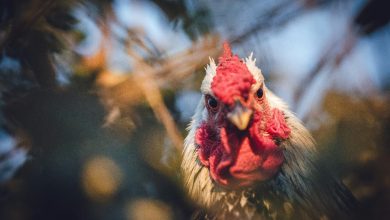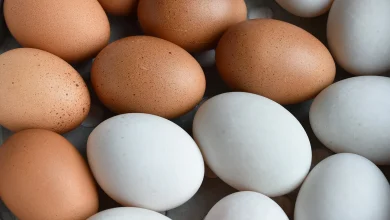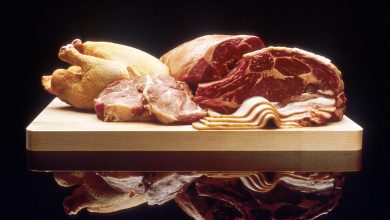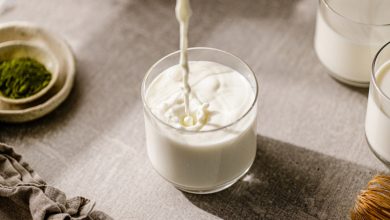BACKYARD POULTRY FARMING – A SUSTAINABLE TOOL FOR RURAL LIVELIHOOD
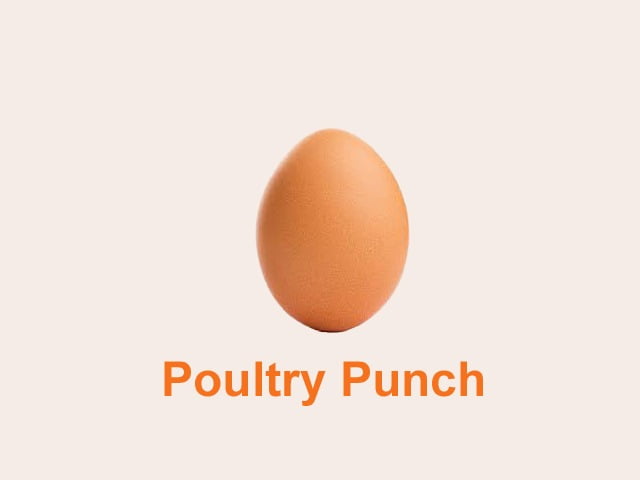
K.D. Singh, Subodh Kumar, P.S. Pramanik, S.S. Kashyap and A.K. Srivastava
Department of Livestock Farm Complex, College of Veterinary Science & Animal Husbandry
1Department of Livestock Production Management, College of Veterinary Science & Animal Husbandry
Krishi Vigyan Kendra, Sant Kabir Nagar
Acharya Narendra Deva University of Agriculture & Technology, Kumarganj, Ayodhya- 224229, Uttar Pradesh.
Introduction
Poultry industry is a fastest growing sector in Indian agriculture having annual growth rate of 8%. The total poultry population has increased by 16.81% over in the recent census and the total poultry in the country is 851.81 million. However, in previous census 2012 it was 729.21 million in numbers. Where as in terms of backyard poultry farming, there is a tremendous increase of 45.48% in the backyard poultry population from 217.49 million to 317.07 million numbers (20th Livestock Census, 2019). Backyard poultry keeping is practised by majority of the poor and marginalized rural households all over India. These households rely on low cost backyard poultry rearing to supplement and enhance their livelihoods. It not only provides nutritional security but also reduces the livelihood vulnerability, and promotes gender equity. Backyard birds are usually low producers with high resistance to diseases. The eggs produced by rural poultry are not in significant proportion with the total production, yet it helps the rural masses in self-employment and caters much needed animal protein. Though income in monetary terms from backyard poultry farming is negligible but it also acts as “Walking bank” for poor and marginal farmers. Besides income generation, rural backyard poultry provides the demand of nutrition supplementation in the form of valuable animal protein through meat and eggs to the rural families.
Advantages of backyard poultry farming
• Produce of rural poultry farming fetches high price compared to those produce from intensive poultry Farming.
• It boost up family income by better utilization of those family members like old age people, who are not suitable for other agricultural works.
• Generate employment opportunity in rural areas and help in checking migration of people to urban areas.
• Higher economic return at low initial investment.
• Integrates well with other agricultural operations.
• Provides additional income to the rural households.
• A unit can be started as low as two chickens to a large flock.
• Eggs and meat from birds reared under free range conditions have low cholesterol concentration compared to those produced under intensive poultry farming.
• Eggs and birds can easily sold in local market at high price because of growing demand for desi chickens and eggs.
• Provides egg and meat with almost no or meager investment through backyard poultry farming in free range system.
• Backyard poultry farming acts as “ATM” because as per family needs, eggs and birds can sold very easily at better price as and when needed.
• Quality of eggs and chicken are better in terms of organic farming because the birds are raised on stress free natural environment without providing antibiotic mixed commercial poultry feed.
• Alleviates protein malnutrition in vulnerable groups viz. expectant women, feeding mothers and children.
• Waste material (insects, ants, fallen grains, green grass, kitchen waste, vegetable waste etc.) can be efficiently converted in to egg and chicken meat for human consumption.
• Minimizes environmental pollution per unit poultry produce, which is otherwise a major problem with the intensive poultry farming.
• Aids in enhancing the soil fertility in backyards.
Breeds and variety suitable for backyard poultry farming
Rural poultry farming using native breeds is being practised in many developing and underdeveloped countries throughout the world. Desi or indigenous birds are generally poor performing in egg and meat production. In rural areas of India, chicken reared in backyard are mostly Desi type with low egg and meat production (Ghosh, et. al., 2005) and there is need of introduction of improved dual purpose bird having capacity to lay more eggs and gain higher body weight than the local or Desi birds. To obtain maximum profit from backyard poultry farming there is a time demand to introduce the most suitable type of poultry breeds and variety in backyard farming, which can perform better at low inputs in natural conditions. Improved chicken than can be introduced in backyard poultry farming should have following characteristics
• Good scavengers
• Hardy in nature
• Self propagating
• Broody in nature
• High mothering ability
• High Disease resistance
• Well body conformation
• Coloured and attractive plumage
• Flight & escaping capacity from predators
• Better adaptability to local climatic conditions
Considering the above said characteristics of backyard type poultry the following breeds or variety may be recommended for backyard poultry farming
CARl Debendra – This is a medium-sized dual-purpose bird suitable for backyard poultry production. It was developed by crossing coloured synthetic broiler line as male line and Rhode Island Red (RIR) as female line at Central Avian Research Institute (CARI), Izatnagar, Uttar Pradesh. The bird achieves moderate body weight of 1200 g at eight weeks of age with economic feed conversion ratio of 2.5-2.6. The meat has lower carcass and abdominal fat than broiler meat, which makes it a consumer’s delight. It is a suitable bird for rural poultry because of its better survivability and moderate egg production ability. Annual egg production of CARI Debendra is 190-200 eggs.
CARI Nirbheek – It is a cross of Indian native breed Aseel with CARI Red developed for free range as well as backyard poultry production. These are very active birds, large in size, aggressive in nature with high stamina and majestic gait. They are able to save themselves from predators due to their fighting characters and activeness. They are also adopted to all climatic zones of the country for backyard production. Annual egg production of CARI Nirbheek is 198 eggs.
CARI Upcari – Has been developed utilizing Indian native chicken with Frizzle plumage. These are multicoloured birds with single comb and medium body size. Presence of Frizzle plumage helps in fast dissipation of heat due to which birds are better adopted specially in tropical climate in arid zones under backyard production. Annual egg production of CARI Upcari is 220 eggs.
CARI Hitcari – This variety has been developed utilizing Indian native chicken with naked neck plumage, which are adapted to tropical climate especially for hot and humid coastal regions of the country. These multicoloured birds have single as well as pea comb and birds are larger in built. Annual egg production of CARI Hitcari is 200 eggs.
CARI Shyama – It is a cross of Kadaknath breed of Indian native chicken with CARI Red. Birds have plumage of various colours dominated by black. The skin, beak, shank, toes and soles are dark gray in colour. The peculiarity of this bird is that most of the internal organs (muscles and tissues) show the characteristics black pigmentation. The black colour of muscles and tissues is due to deposition of melanin pigment, which causes increase in protein and decrease of fat and muscle fibre. Annual egg production of CARI Shyama is 210 eggs whereas in SA PPLPP (2009) report Kadaknath hens start laying eggs 6 months onwards and eggs are laid in two to three clutches in a year with 25 to 30 eggs per clutch thus 80 to 90 eggs are produced in a year. So CARI Shyama is better performer than Kadaknath having same characteristics of Kadaknath fowl.
Giriraja and Swarnadhara – Varieties were developed by Karnataka Veterinary, Animal and Fishery Sciences University, Bangalore. The hybrid coloured chicken variety named Giriraja was developed for backyard rearing by College of Veterinary Science, Bangalore. The birds have a high egg production potential along with better growth compared to local varieties and are suited for mixed and backyard farming. Giriraja female lays about 130-150 eggs a year. The eggshell is brown in colour and thicker than that of other commercial eggs and does not break easily
Swarnadhara chickens – Have a high egg production potential along with better growth compared to other local varieties and are suited for mixed and backyard farming. The bird can be reared for its eggs and meat. It attains maturity from the 22-23rd week after hatching. Hens attain a body weight of about 3 kg and cocks about 4 kg. “Swarnadhara hens lay about 180-190 eggs in a year. When compared to Giriraja, this breed yields 15-20 eggs more in a year. The eggshell is brown in colour and thicker than that of other commercial eggs and does not break easily. The eggs can be stored for 8-10 days at room temperature during summer and during winter for about 15 days. The birds are sturdy and have a high longevity.
Vanaraja – is a backyard type bird developed by the Project Directorate on Poultry (PDP), Hyderabad (Andhra Pradesh). It is a multi-coloured dual purpose bird with attractive plumage. The male parent has been developed for moderate juvenile body weight, long shanks and good immuno-competence. The female parent has been developed for high egg production, better egg size, high hatchability and immune competence. The plumage pattern and colour of Vanaraja bird is very attractive and closely resembles that of the desi fowl. Due to their relatively light weight and long shanks, these birds are capable to protect themselves from predators which are otherwise a major problem observed in birds reared in backyard. Vanaraja males attain moderate body weight at 8 weeks of age under regular feeding system and the pullets produce around 160-180 eggs in a laying cycle with minimum supplementation of locally available feed ingredients and other managemental inputs.
Suggestions for obtaining high returns from backyard poultry farming
a) Protect from predators.
b) Provide additional concentrate feed.
c) Provide clean and fresh drinking water.
d) Provide optimum space to avoid overcrowding.
e) Proper vaccination, de-worming and veterinary care.
f) Regular disinfection of poultry house and surrounding.
Conclusion
The eggs and meat of birds reared in the backyard farming fetches higher premium due to high consumer acceptability even in the urban sectors where plenty of eggs and poultry meat from commercial units are available. Besides stable supply of high-quality animal food, backyard poultry production promotes income opportunities particularly for the weaker sections in the tribal areas. The backyard farming will certainly improve the economic status of a majority of rural/tribal families from lower socio-economic groups in the rural/tribal areas. Backyard farming fulfill a wide range of functions e.g. the provision of meat and eggs, food for special festivals, chicken for traditional ceremonies, pest control and petty cash, utilizing minimum inputs, minimum human attention, and causing less environmental pollution. The backyard poultry farming with improved birds provide a better livelihood security to the poor farmers paving a way for sustainable agriculture in rural areas.
References
1. 20th Livestock Census, 2019. Department of Animal Husbandry, Dairing and Fisheries, Ministry of Agriculture and Farmers Welfare, Govt. of India.
2. Bhanja, S.K., Bhadauria, Pragya.,Tyagi, Praveen K.(Eds). 2014. Specialized training manual: Layer production. Central Avian Research Institute, Izatnagar, UP-243122, (INDIA), pp-131.
3. Ghosh, M. K., Ahmed, F. A., Buragohain, R., Pathak , P. K. and Bhattacharya, M. 2005. Growth performance of Vanaraja birds in high altitude areas of Arunachal Pradesh under Backyard system of management. XXII Annual conference and National Symposium, Indian Poultry Science Association, Project Directorate on Poultry, Hyderabad, from 2-4 February 2005. pp 198.
4. Guèye, E.H.F. 1998. Village egg and fowl meat production in Africa. World’s Poultry Science Journal, vol. 54, no. 1, pp. 82–86.
5. H. K. Bett, K. J. Peters, and W. Bokelmann, 2011. Hedonic price analysis to guide in breeding and production of Indigenous chicken in Kenya. Livestock Research for Rural Development, vol. 23, no.
6. http://www.lrrd.org/lrrd23/6/bett23142.htm.
7. https://icar.org.in/cari/varieties_deve.php
8. Khan, A.G. 2008. Indigenous breeds, crossbreds and synthetic hybrids with modified genetic and economic profiles for rural family and small scale poultry farming in India. World’s Poultry Science Journal, vol. 64, no. 3, pp. 405–415.
9. Magothe, T.M., Okeno, T.O., Muhuyi, W.B. and Kahi, A.K. 2012. Indigenous chicken production in Kenya: I. Current status,” World’s Poultry Science Journal, vol. 68, no. 1, pp. 119–132.
10. Magothe, T.M., Okeno, T.O., Muhuyi, W.B. and Kahi, A.K. 2012. Indigenous chicken production in Kenya: II. Prospects for research and development. World’s Poultry Science Journal, vol. 68, no. 1, pp. 133–144.
11. Pathak P.K. and Nath B.G. 2013. Rural poultry farming with improved breed of backyard chicken. J. World’s Poult. Res. 3(1): 24-27. Journal homepage: http://jwpr.science-line.com/
12. SA PPLPP (2009) Code: INGP04, “Reviving the Indigenous Poultry Breed -Kadaknath: Enhancing Livelihoods of Tribals through Niche Market Opportunities”. Potential Good Practice Note, Delhi, India.
13. Vali, N. 2008. Indigenous chicken production in Iran: a review. Pakistan Journal of Biological Sciences, vol. 11, no. 22, pp. 2525–2531.

